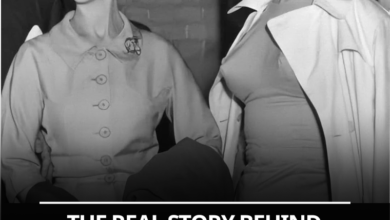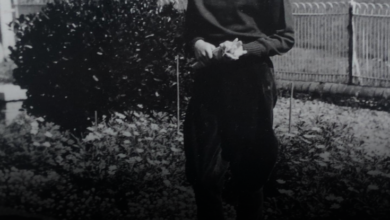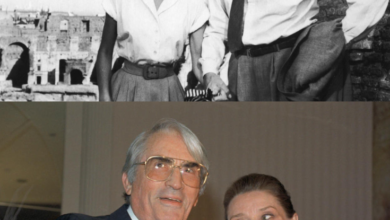The Untold Story of Marilyn Monroe’s Toughest Role—The Difficulties She Faced on Bus Stop
OPINION: This article may contain commentary which reflects the author's opinion.
Marilyn Monroe’s journey through the production of Bus Stop (1956) was fraught with challenges, both personal and professional, as the iconic actress navigated a pivotal moment in her career. This film, which marked Monroe’s first as a co-producer under her newly established company, Marilyn Monroe Productions, was a high-stakes venture that tested her resilience and commitment to proving herself as more than just a glamorous screen presence. Despite the hurdles she faced on set, Bus Stop stands as a testament to Monroe’s determination and growth as an artist.
The High Stakes of Bus Stop
Released in the summer of 1956, Bus Stop was much more than just another role for Monroe. As the first film produced by her company, the project carried significant personal and professional stakes. Beyond her financial investment, Monroe’s credibility as a serious actress was on the line, and many in the industry were skeptical of her ability to succeed in a role that demanded depth and dramatic chops. Monroe was aware of the pressure, as the industry was quick to label her a “difficult” actress, and the expectations were daunting. This situation created a tense atmosphere on set, with Monroe determined to rise to the challenge, knowing that the success of Bus Stop would be critical for her future in Hollywood.
Anxiety and Physical Toll
Monroe’s severe anxiety was one of the most pronounced challenges during the production. Co-star Don Murray recalled that Monroe was often “very, very nervous” on set, to the point where she would break out in rashes before each scene. These physical manifestations of her anxiety required makeup artists to conceal the blemishes before filming could proceed. One of the most stressful moments for Monroe came during a scene where she was required to appear nude in bed, where she repeatedly exposed herself by accident, adding to her distress. Her nerves were palpable, and her emotional vulnerability affected both her performance and the overall atmosphere on set.
Directorial Doubts and Tension
Director Joshua Logan, aware of Monroe’s reputation for being difficult, was initially doubtful about her acting abilities. Monroe’s chronic tardiness and perfectionism only heightened the tension between the two. Logan’s skepticism towards her professional approach led to a strained working relationship. Filming took place in locations like Sun Valley, Idaho, and Phoenix, Arizona, where Monroe’s struggle to meet expectations was compounded by her own self-doubt and the demanding conditions on set. While Logan would later acknowledge Monroe’s talent, the initial tension created a difficult working environment for the actress.
Method Acting and Creative Control
For Bus Stop, Monroe also sought to implement Method Acting techniques, which she had learned at Lee Strasberg’s Actors Studio. This acting style, which emphasized emotional immersion and authenticity, was controversial at the time. Monroe’s commitment to this new approach required her to delve deeply into her character, Cherie, a vulnerable and complex woman. As an unaccredited co-producer, Monroe had significant control over the production, including the approval of the director and cinematographer. She selected Joshua Logan as the director and Milton Krasner as the cinematographer, decisions that put additional pressure on her. Monroe’s desire for creative control, combined with the already tense relationship with Logan, made her involvement in the production an intense and, at times, turbulent experience.
Realism in Costume and Makeup
Monroe’s insistence on realism in her portrayal of Cherie extended to the film’s wardrobe and makeup, further clashing with studio expectations. She chose to wear distressed costumes, such as ripped fishnet stockings and a moth-eaten fur coat, to convey the character’s downtrodden nature. Monroe’s pale makeup, which was meant to reflect Cherie’s fragility, also faced resistance from studio executive Buddy Adler. Her pursuit of authenticity in her portrayal of Cherie added another layer of challenge to an already difficult production, as her artistic vision often conflicted with the expectations of the studio.
The Pressure of Live Performance
A pivotal moment in Bus Stop comes during a saloon scene in which Monroe’s character performs “That Old Black Magic” with an orchestra. Monroe’s performance was intentionally off-pitch and exaggerated to reflect Cherie’s lack of talent, a bold artistic choice that required significant vulnerability. The pressure to deliver a flawed yet authentic performance weighed heavily on Monroe, especially given the live nature of the scene. Despite her anxiety, Monroe’s commitment to portraying Cherie as a deeply human character added depth to the performance, making it one of the most memorable moments in the film.
Post-Production Disagreements
After filming wrapped, Monroe experienced further frustration with the production. She believed that the final edit of the film favored Don Murray’s character over hers, leading her to stop speaking to Logan and screenwriter George Axelrod for nearly a year. Although Monroe later admitted that her perception of the editing was incorrect, this post-production fallout highlighted the complex relationship she had with the film. Monroe’s emotional attachment to her work and her drive for perfectionism sometimes led to personal conflicts, adding another layer of difficulty to the production process.
Coaching and On-Set Dynamics
Throughout the production, Monroe was accompanied by her acting coach, Paula Strasberg, who provided consistent support on set. While some directors might have found this presence intrusive, Logan was understanding and allowed Strasberg to work with Monroe before the director would step in. This arrangement helped Monroe find the emotional depth needed for her performance but also contributed to the dynamic on set, as it added another layer of complexity to the already tense atmosphere.
Critical Acclaim and Oscar Snub
Despite the challenges she faced, Bus Stop was a commercial success, grossing over $7 million in distributor rentals. Critics lauded Monroe’s performance, with publications like The Saturday Review of Literature praising her ability to dispel the notion that she was merely a glamorous personality. However, despite the acclaim, Monroe was not nominated for an Oscar, a snub that many considered unjust, especially when compared to Deborah Kerr’s promotion for The King and I. This disappointment was a bitter reminder for Monroe that even critical success did not guarantee recognition by the Academy.
Conclusion
Marilyn Monroe’s experience on the set of Bus Stop was one of the most challenging periods in her career. Battling anxiety, director skepticism, and a demanding production environment, Monroe navigated the difficulties with determination, ultimately delivering a performance that showcased her versatility and range as an actress. Despite the obstacles, Bus Stop became a box office hit and solidified Monroe’s standing as a serious actress. Her journey through the film is a testament to her resilience and her ability to overcome personal and professional adversity, making Bus Stop one of the defining moments of her career.



